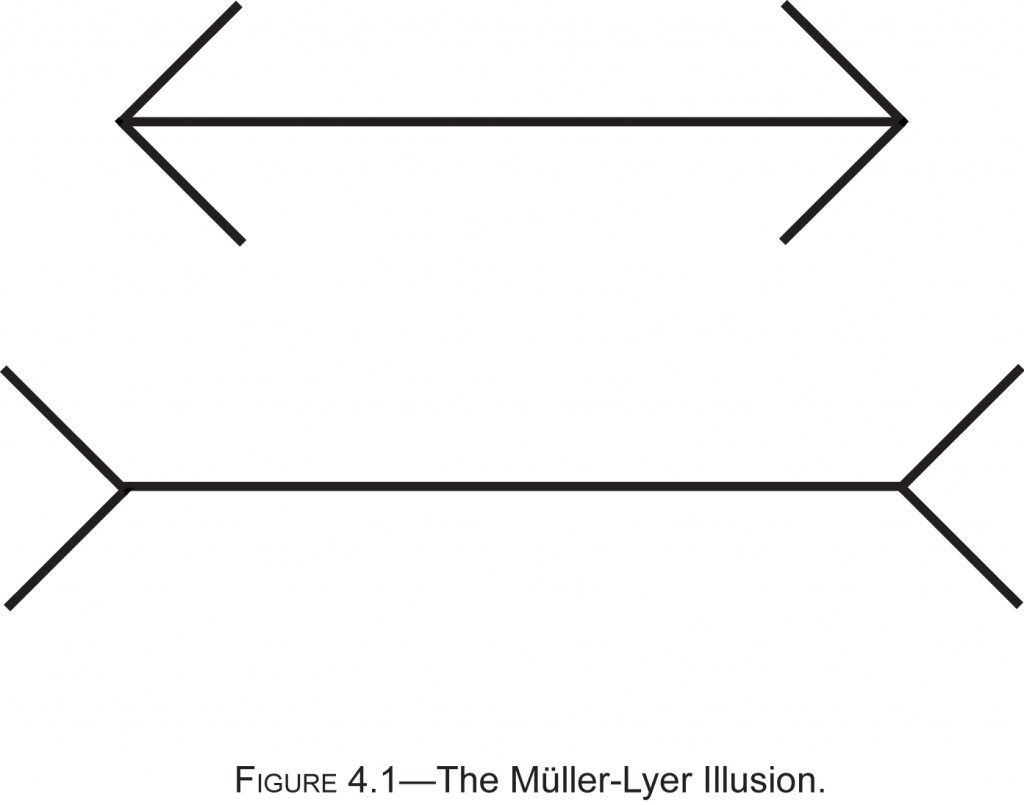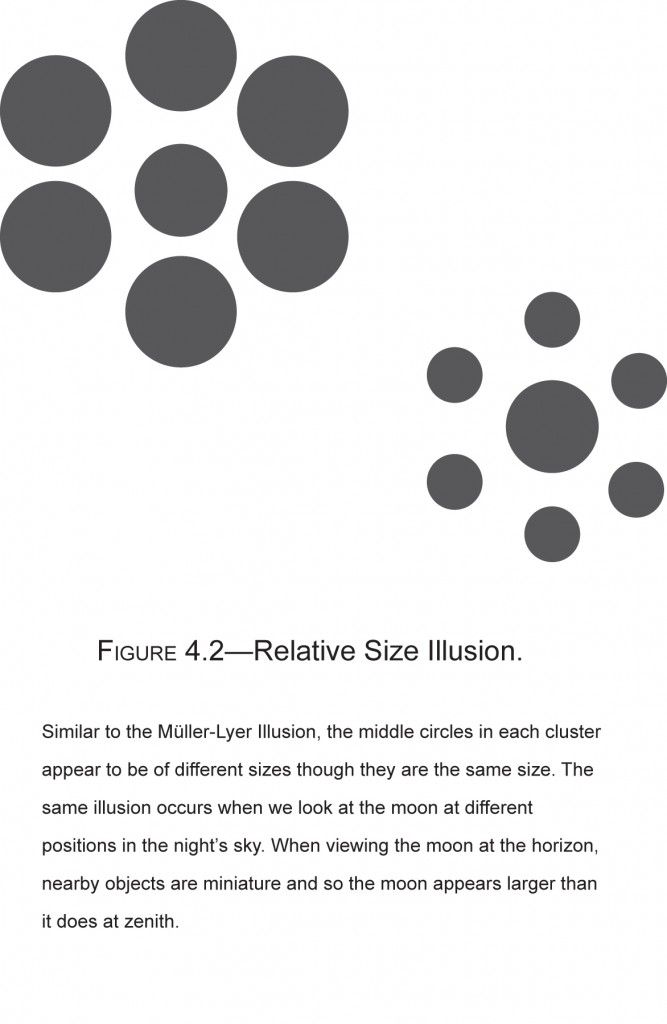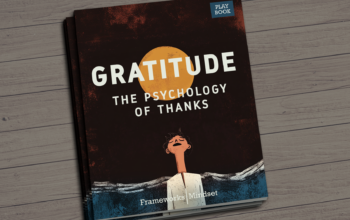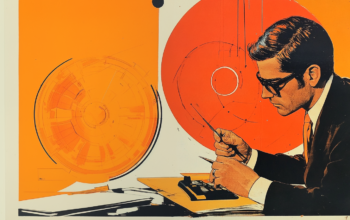Romancing the Subconscious
A chapter from the 2014 release, Psychonomics: How Modern Science Aims to Conquer the Mind and How the Mind Prevails.
On a cool summer evening in Southern California, a group of three fashionable young women scamper into a posh hotel bar to partake in their typical Friday evening ritual of drinks, dancing, and, of course, decision-making. The girls don’t admit that they’re out looking for guys, but they aren’t opposed to the idea either. After all, they’re not spending the evening in their apartments in pajamas. They’re in high-waisted jeans at a bar with an upside-down sign.
The three women are all very attractive and, by many accounts, could have their choice of men. Over the course of the night, they are approached by several groups of guys, of which some get to talk to them for a while and some fail spectacularly. The failures can be awkward and often rather painful. “Sometimes guys just don’t get it,” one of the women, Katlyn, says as she tosses back her tangled brown locks. “It’s clear we’re not interested, but they still don’t go away.”
On the other hand, the successes can be fun and sometimes lead to lasting friendships. “You can meet some really interesting people out,” Katlyn says. “And when you click, you just know it.”
If you ask the women, they’ll tell you they know what they want in a guy and won’t get into a relationship unless they find it. Katlyn, for instance, has a promising career as a lawyer and says she isn’t interested in anyone who makes less money than she does. The other two aren’t so particular when it comes to a guy’s monetary standing but still want someone who is smart and capable. All three want a guy that can make them laugh.
The assumption with dating is that women know what they want; they know what they’re looking for in a guy and can determine who has it by chatting with them and perhaps going out a few times. This is to suggest that dating is a conscious endeavor and that choosing a mate is a deliberate, rational behavior.
But new research suggests that it might not be so clear-cut. Studies have shown that the psychology of dating is in large part subconscious and that mate selection is far from the deliberate and rational action it is assumed to be. Like Peyton Manning’s split-second decision-making or Michael Jordan’s three-point shooting in the zone, dating, too, is largely a subconscious endeavor in which long-standing instincts overpower any cognizant intentions. Unlike Manning and Jordan, however, the subconscious nature of dating can and often does lead to unexpected and rather inconsistent behavior.
A study conducted by a group of university scholars showed exactly how capricious singles can be in their quest to find their mates. The researchers, led by Stanford professor Itamar Simonson, gathered a group of young single professionals and asked them to rank six characteristics they were looking for in their mates. The six characteristics were ambitiousness, attractiveness, fun, intelligence, shared interests, and sincerity. The results reflected their conscious intentions when it came to dating—what qualities they were consciously aware they wanted. Then the researchers invited the singles to participate in a session of ‘speed dating’ to see whether they actually sought out the characteristics they said they wanted. This is where things got interesting.
That’s because, in the heat of the speed dating action, the qualities people said they were looking for were tossed aside in favor of other characteristics. A girl like Katlyn might have ranked ambitiousness as her top characteristic beforehand but, when it came time to choose between several available guys, chosen someone who wasn’t very ambitious at all but was good-looking and funny instead. She might say that she’s interested in a high-income earner, but when it comes down to it, all she really wants is someone who makes her feel good, and that can come from guys in any profession.
We can look at experiments like this in several ways. The most compelling might be the one that says men and women, though they say they know what they want and actively seek it, are influenced quite a bit by their subconscious minds. This can sometimes be good for us, as in the case of subconscious decision-making leading to great plays and quick saves. But it can sometimes lead to outcomes we don’t anticipate, and that can lead to trouble in contexts such as the dating world.
Perhaps it could be said that Katlyn’s subconscious mind picks up on subtle traces of information that her conscious mind isn’t paying attention to. Perhaps the ambitious guys are all jerks and would thus disrespect her. There are things the subconscious mind realizes that might very well save her from a troubled relationship. And yet, at the same time, there is a chance that subconscious inclinations lead us astray. There are, after all, good reasons why Katlyn wants a guy with a high income. Neglecting those reasons could lead to a world of difficulties.
We might be okay with subconscious influences when they help us to succeed in sports or when we can rely on them to help us do what we intend. But what about when those influences lead us down the wrong path? What happens when those subconscious influences cause us to make mistakes?
* * *
Neil Strauss is the consummate underdog. Growing up, he was ugly and so he didn’t feel comfortable talking with girls. Without experience, he lacked confidence, and so seemed rude and unlikable. The less women liked him, the lower his confidence fell, and the less likable he became. It was a vicious cycle. He was one of a great majority of guys who were incapable of attracting women or even talking with them in any kind of romantic context.
That all changed one day when his phone rang. Strauss’ editor wanted him to rewrite some amateur how-to guide for seduction that had been floating around the Internet. It was somewhat insulting—Strauss was a respectable journalist, not some creepy womanizer. After some prodding, his editor managed to convince Strauss that it was worth checking out. What he read changed his life. Strauss saw that the underground community responsible for coming up with the guide was not just some rag-tag group of misanthropes trying to get lucky; rather, they made up a tight network of thinkers chiseling out an entirely new arm of human psychology. As Strauss put it, these guys were “secretly working to turn the art of seduction into an exact science”. And, as he soon discovered, it worked.
Based on a few basic principles, this group of guys, self-labeled ‘pick-up artists’ or ‘PUA’s, had devised a practically foolproof method for approaching, hanging out with, and securing intimacy with women. This whole enterprise they called ‘The Game’. Strauss decided to try it out himself. If it could work for a guy like him, he thought, it could work for anyone.
By his own admission, Neil Strauss is far from attractive. He’s short and bald, has a big nose and small eyes, and he’s so skinny that he looks malnourished. If anyone were destined for the cold, solitary life, it would be him. But as he started to master the techniques, he found it was like magic. He started to talk with women and soon enough they started to respond favorably. Eventually, girls started falling for him, and, ultimately, he reached a point where he could seduce any woman in any situation as if with a snap of the fingers.
So what was his secret? According to these PUAs, all successful hook-ups are made up of eleven distinct steps: (1) a target is selected, (2) the target is approached and a connection is made, (3) value is demonstrated, (4) obstacles are disarmed, (5) the target is isolated, (6) an emotional connection is achieved, (7) the target is extracted to a seduction location, (8) buying temperature is pumped up, (9) physical connection is made, (10) last-minute resistance is blasted, and finally, (11) expectations are managed. According to Strauss, every time a guy employs these steps, he will secure intimacy with a woman. Likewise, whenever a guy is successful in hooking up with a girl, whether he knows it or not, it is because he employed these specific procedures. To hear it from Strauss, it is like clockwork.
With a glimpse into the mechanics of The Game, one begins to see how the magic works. Each step in the procedure, from approach to follow-up, features an action or behavior designed to play on a girl’s subconscious needs and desires. By saying something here and doing something there, a guy can trigger deep-seated psychological tendencies and make a girl think and do things that she would otherwise not think or do. And this, in short, is what The Game is all about: tapping into the psyche like hypnosis, suggestion, or regular old illusion to make people think and act on things outside of the norm.
The first and foremost principle that the PUAs tap into is the need for people to feel wanted. Everyone wants to be wanted. But you can’t simply give a person this valuable attention—you must make them earn it by withholding it to some extent. Talk with her friends at first and ignore her a little. Then, when you do finally talk to her, tease a little with what’s called a ‘neg’, a slight insult that is more of a joke than anything. The subtle nonchalance will be enough to compel interest—even if she wouldn’t be interested in the first place, her subconscious drives her to obtain the appreciation and approval that she knows she deserves.
It is seen in each of the specific steps of the process. For instance, in the second step, approach and open, the key is to be fun and interesting. The typical guy will go up to a girl and immediately talk about what’s on his mind—hooking up. But that comes off, naturally, as demanding and creepy. No one—especially an attractive woman—wants to be cornered by some clingy creeper all night. So the guy needs to present himself as a ‘friendly stranger’, neither demanding nor insistent but fun and interesting right off the bat.
Now, becoming fun and interesting is a complex process that takes time. But there are a number of simpler, more immediate tactics that one can employ to give the illusion of being fun and interesting. They all center on light, amusing topics of conversation that anyone can participate in. Consider one of the more popular openers: “My neighbor just bought two dogs and is looking for ’80s or ’90s pop duo names.” Who doesn’t want to come up with a few fun ones? “Milli and Vanilli”, “Hall and Oates”, and so on. Providing an amusing ice-breaker like this makes a person likable no matter how he acts elsewhere.
Or consider this opener: “Settle an argument for us. My roommate got an invite to the Maury Povich Show. It seems they’re doing a segment on secret admirers. Evidently, someone has a little crush on him. Do you think he should go on the show or not?” Again, who doesn’t want to chime in with advice here? It doesn’t matter who Maury Povich is or if he even has a show anymore, everyone wants to speculate about these relationships and their implications. As long as a guy has a few of these thought-provoking openers, he is practically guaranteed to spur conversation and will thus appear fun and attractive.
Now, most likely, the guys who offer up this shtick are not really interested in the outcome of the conversation. They, like typical guys, are interested in hooking up. Since they don’t appear to be so one-track-minded and instead actually provide something entertaining for the women to focus on, it seems as though these PUAs are not interested in the same old thing; it seems as though they have something to offer. Through illusion, pick-up artists are able to compel thoughts and actions that would normally not be there.
This same impulse animates other weapons in the PUA’s arsenal. Consider the third step, demonstrating value. This step is almost wholly comprised of little psychological games that play on the subject’s desire to learn, feel special, and be wanted. Examples include the ‘best friends test’, in which the subjects find out how close they are with their friends; translating body language, in which the subjects discover how they project themselves; and handwriting analysis, which gives the subjects insights into their personalities. The ‘value’ demonstrated here is nothing more than being interested in a person’s interests and desires—and who doesn’t want that?
This trickery plays on the subtlest elements of the human psyche. Even those who believe they are in full control of their preferences and choices, such as Katlyn and her friends, are swayed. To the chagrin of these headstrong women, their decisions are largely influenced by their subconscious minds and the men who can manipulate them.
Recall Framing. As we saw on a previous page, a statement’s frame, whether positive or negative, can sway a person’s reaction to it. Shoppers are more likely to buy ground beef that is labeled ‘90% fat-free’ than that labeled ‘10% fat’. Medical patients are more likely to undergo a procedure if the diagnosis is framed in terms of survival as opposed to mortality. In a similar way, people will entertain particular requests, offers, and romantic overtures just because of the way they are framed, no matter what the actual content is.
One study showed this by testing how likely it was for people to do a favor for a pushy stranger. In the tests, an experimenter waited by a copy machine. When someone approached to use the copier, the experimenter would run up and attempt to cut in line, saying, “Excuse me, I have five pages. May I use the Xerox machine?” Reasonably, 40% of the time the experimenter was refused access to the copier.
When the experimenter added a simple explanation, as in the statement, “Excuse me, I have five pages. May I use the Xerox machine, because I’m in a rush?”, the rejection rate dropped to 6%. The sensible explanation clearly made an impact on the people’s willingness to cooperate. And altogether this makes sense: People are hesitant to accommodate a stranger’s request when there is no justification given for it, and they are rather helpful when a good reason is given.
What is most interesting, however, is that people accommodate the stranger’s request even when the explanation given is replaced with filler content—i.e., “because I need to make copies”. Even when the explanation conveys no real justification for the intrusion and only restates the obvious, people act as if it did convey justification. When the explanation was “because I need to make copies”, the rejection rate was 7%—strikingly close to the trial with a legitimate explanation. Just by adding the structure of a good reason made the subjects of the study react in a more accommodating way, even when the reason was nothing more than a ‘psychological placebo’.
The researchers concluded that the subjects of the experiments were not really listening to the experimenter’s request, but rather getting the gist of the request and following a ‘mental script’ to arrive at a decision. As we have seen, conscious decision-making is a thorough, taxing endeavor. And whenever people get the chance to replace that endeavor with a less demanding enterprise, they will. As in the case of the copy machine intruder, a person would have to think about a person’s intentions, judge their reason, reflect upon past instances where a similar reason was given, and compare past results. That is a huge effort that only the most arduous thinker would want to undergo over and over throughout the day.
Instead, people write a mental script that refines the process down to two or three ‘yes/no’ questions that can easily be answered. In the copier example, that script would go something like this: ‘Someone asks a favor. Does the person have a reason? Yes. Then let them go.’ The script is lightweight and works in most situations to accommodate those with earnest requests and to ignore those without. One doesn’t have to analyze the reason, contrast it with the person’s level of sincerity, or trustworthiness—all he has to do is detect a reason. And so the script is installed and accessed whenever one is asked to do a favor. The mental homework is avoided, and people get by more or less as if they had made a conscious decision.
Alfred North Whitehead quipped that “Civilization advances by extending the number of important operations which we can perform without thinking about them.” We employ these mental scripts more often than it might seem—when driving to work, when ordering coffee, and when exercising. We know that we fill our lives with these scripts because there are times when we think back on what we have just done and have absolutely no conscious recollection of the action—it’s a blank because we were ‘on autopilot’.
As it is with Peyton Manning’s split-second decision-making and Michael Jordan’s zone, we, too, have mastered several different circumstances and can make quick decisions when facing them again. By thinking through those situations over and over, we practice and eventually figure out how to handle them without thinking about them. We replace heavy, conscious decisions with light, subconscious decisions in order to address them more rapidly. This abstracts the choices, but it allows us to be much more proficient and productive with our actions than we could be otherwise.
In their analysis, Strauss and his legion of PUAs have constructed a near foolproof process to attract women. It isn’t the women’s conscious selves that fall for these guys—it is their subconscious selves. As Strauss would describe it, by pushing psychological buttons here and pulling emotional strings there, he can make a girl do just about anything he wants, even if it is something that she was adamantly opposed to doing beforehand. He knows as any good psychologist would that women run mental scripts. All he has to do is to feed them with the right inputs and the scripts will do the rest.
Psychological manipulation is a storied institution. Psychologists have been analyzing and categorizing social interactions since the science was born in the mid 1800s. Soon after the advent, practitioners readily applied this knowledge to self-development and social skills improvement. In 1936, Dale Carnegie published the classic How to Win Friends and Influence People, directly utilizing psychological techniques to persuade and get what you want. In many ways, Carnegie’s book prefigures The Game. Chapter titles reflect the key similarities: ‘Begin in a friendly way’, ‘Become genuinely interested in other people’, ‘Make the other person feel important—and do it sincerely’. In other words, understand what they want and give it to them
While Strauss and his comrades took it to another level, the idea is still the same. It is at the core of all social interaction. As Strauss astutely points out, “Routines weren’t training wheels after all; they were the bike. Every form of demagoguery depends on them. Religion is pick-up; politics is pick-up; life is pick-up. Every day we have our routines to get people to like us or to get what we want or to make someone laugh or to endure another day without letting someone know the nasty thoughts we’re really thinking about them.”
* * *
As with other stories in this book, it is easy to view this as a matter of irrationality. The dating world should be like business or any other reasonable pursuit. Guys and girls should know what they want and go after it. They shouldn’t let subliminal factors influence their preferences and certainly not their choices. That is the way dating should work—if it were rational.
When this doesn’t happen—when instead people let their subconscious minds do the decision-making, thus opening the door to suggestion and influence—the thought occurs that something must be wrong; people must be irrational. Neil Strauss and his buddies found that attraction is no more than a mechanical response to certain psychological buttons that anyone can press. People don’t go through a deliberate, conscious analysis to determine which mate they want; they just follow their instincts and end up where they will. As such, people can be manipulated and, to some degree, have their decisions made for them.
Taking a step back, the prospect is rather disconcerting, indeed. If we aren’t in control of whom we’re attracted to or whom we end up with, then anyone can make us do things that we don’t intend or will later regret. We’re at mercy of the PUAs of the world because we cannot control our thoughts and actions. Ask a behavioral economist and he’ll tell you that this means everyone is irrational and we ought to safeguard the whole dating enterprise. One might speculate that the Nudge Czar’s next big project will be to bring back prearranged marriages. Actually, it would be the only way to avoid subliminal blunders.
But, by now, the reader will be skeptical of both diagnosis and prescription. Certainly, our subconscious minds play a sizeable role in our thoughts and actions, and in some instances this leads to mistakes. But, as we have found, the subconscious mind has good reasons for the things it does, and this is the case even if it leads to mistakes or otherwise goes against our best intentions. Those good reasons should not be neglected or overridden.
Take optical illusions as an example. We know from our everyday lives that one’s experience of the world around him is not necessarily equal to the world as it is. Somewhere in between one’s sensory input and one’s life experience, the mind steps in and changes things up. In the famous Müller-Lyer Illusion, we know that the line with inward arrows is the same length as the line with outward arrows, but the former looks longer than the latter. Somewhere between the sensory input of the lines, our minds trick us into believing that they are different lengths.
Similarly, the moon looks enormous on the horizon and tiny at the zenith, even though it is the same size in both places. Our eyes are seeing an object that is the same size, but, given its context, we perceive it to be different sizes. This illusion is so powerful that some might have a tough time believing that the moon actually appears to be the same size. I, for one, had to measure it to be sure. Somewhere in the process of viewing the moon, our minds switch things up so that we’re actually experiencing something other than what is happening in reality.
It’s what happens in all such illusions and the reason why we can’t help seeing gray dots in the middle of crosshairs, or feeling as though we’re going slower than we are while exiting the highway, and why the ship’s static deck appears to jostle about after staring into the ocean. It is why people have such a hard time believing that, when laid down, a basketball goal would be narrower than the lane of a highway. It really is—a basketball goal is 10 feet wide while the width of a standard highway lane is 12 feet. The difference in posture is enough to distort our sense of reality.
So why does this happen? To put it bluntly, our minds lie to us. Contemporary Neuroscience tells us that all experience—from our perception of a moonrise to the feel of a blanket to the sensation of falling in a roller coaster—occurs to us beyond a mental filter. The sensory data comes into a processing system that analyzes and reforms it, and only then does the information carry on to what we call our experience. Only after it passes through our minds does an image or feeling become reality for us. In other words, we don’t experience what our senses take in; we experience what our minds translate the sensory data to mean. As such, what we experience isn’t really what is going on in the world—it is what our minds think is going on.
This is the premise behind one of the most mind-boggling facts about human experience: every physical property in the world is only experienced as it is because our minds create it that way. The color of an apple, the sound of a bird chirping—all of our sensory experiences occur not in the world as it is, but in our minds. To quote Kant, there is “Das Ding an sich und Das Ding für uns”—a thing as it is and the thing as we know it.
Consider light and color. The assumption is that objects have certain colors and that is why we see apples as red and the sky as blue. But, in reality, the objects themselves have no such color. Certainly, they have physical properties with molecular constituencies and behaviors, and these constituencies reflect light in certain ways, but it isn’t until that light reaches our eyes that it is assigned a color. It was Newton who discovered that light is colorless. He knew that the particles that make up the light wave do not appear red or blue or any other color and that it is only after those light waves reach the eyes and are translated into brain waves that they become what we know as colors. This is why it is possible for different people to see things differently and as different colors. It is not that they are just denying the obvious experience of the world. Rather, it can be said, experience itself is within the mind and is thus different for everyone.
Consider sound and music. The assumption is that the world and universe are filled with sounds, from birds chirping to supernovae exploding. But, as Neuroscience has taught us, these sounds that seem to exist so naturally as a part of the universe are not really there. Sure, birdsongs and explosions have physical properties—their own molecular makeup and behaviors—and these properties conduct vibrations in the air around them. But those vibrations do not consist in sounds until they reach a human (or animal) ear. Once they reach the ear, the vibrations are translated into electrical pulses that give us the impression of sound. In short, the world is silent, and all of the sounds that we hear are really only in our minds.
This goes for all aspects of sound, including pitch and even volume. As Daniel Levitin explains in his book, This Is Your Brain on Music, “Pitch is a purely psychological phenomenon related to the frequency of vibrating air molecules. By ‘psychological’, I mean that it is entirely in our heads, not in the world-out-there; it is the end product of a chain of mental events that gives rise to an entirely subjective, internal mental representation or quality.” The entire conception of sounds and songs and noises is no more than a figment of our imaginations—completely invented and used for our own benefit.
The implications of this are vast. If nothing else, one has to think twice before answering the old saw, ‘If a tree falls in the forest and no one is there to hear it, does it make a sound?” If we were to ask contemporary neuroscientists, the answer would be ‘No’. And the same can be said for all of the senses. If no one is there to eat a pie, does it have a taste? If no one is there to smell a rose, does it have a scent? If no one is there to touch an ice cube, is it cold? The answer is the same for all of these questions.
As can be imagined, this neat little concept is cause for sincere mystification. If colors and sounds and tastes don’t exist outside of our minds, then what really does exist? All that we sense and experience seems to have these end qualities, and so it is a real enigma to think of a world without them. What is going on out there if it’s not how we perceive it? What are we missing because we aren’t sensing it happening? And, if all that we experience is conjured up in our minds, then what are the chances that we’re getting it wrong?
One way to look at it is through the lens of modern physics. Basically, everything is energy, and we humans have learned to absorb the energy’s various characteristics and intensities through different input mechanisms. Our senses are just really inventive ways to make sense of the energy that is pulsating around us. This is to say that one’s experience is really just his impression of reality and not really reality at all. It is like the Impressionist painting that takes reality and stylizes it to the artist’s touch. The image is the artist’s experience, not reality per se, but real enough for the visionary.
The upshot, of course, is that no one’s experience will ever completely match reality. Everything will be viewed through a filter and so everything is at least somewhat distorted. Optical illusions prove just how easily our minds distort reality—and just how persistent they are in maintaining that distortion. Our other senses are prone to the same kind of misperceptions, and, in total, one’s experience is rather unreliable.
This is not as benign as it might seem. That is because, if we act upon our misperceptions, we will most likely make mistakes, and those mistakes can be detrimental. If we claim that the line with the inward arrows is longer, we will miscalculate and come to incorrect conclusions; if we think the exit ramp is longer than it is, we might crash into a tree. Given how reliably we can be fooled by these kinds of illusions, it is easy to see how we might be culpable of regular and even predictable mistakes in our everyday lives.
* * *
While some of these illusions are not terribly harmful and won’t lead many to make foolish decisions at work or at home, the same kinds of tricks do appear in more critical places, such as the marketplace, school, the office, and in government. When illusions are encountered in these situations, they take on greater import and pose a greater risk to personal and social well-being. Miscalculating investment returns can lead to financial ruin; misjudging probability can lead to life-changing blunders. For this reason alone, we should be wary of the tricks our minds play and attempt to mitigate them.
And yet, illusions are so common and instinctual as to suggest that they are not simply flaws in our systems. How could such familiar and ingrained traits be so detrimental to our well-being? One might wonder whether these errors can provide anything valuable beneath the surface, and, if so, whether they are not really errors as they seem but rather some other, subtler form of decision-making. At face value, they are obviously irrational, but perhaps there is an underlying rationality after all.
In optical illusions, for instance, it might seem clear that our minds are tricking us—we know for a fact that the lines are the same size and we know for a fact that the moon is the same size on the horizon as it is at its zenith—and so it seems as though we’re irrational when we see the lines as different lengths or the moon as humungous on the horizon. But might there be a good reason for seeing things this way?
To be sure, our visual systems use information from past experience that is unavailable to our conscious minds and in this way can be more efficient and effective in analyzing and judging the environment. When looking at objects on the horizon, for instance, our subconscious minds refer to past experience that says objects in the distance are much larger than they appear. We see them as small, but we know they are much larger than they look: A tree that looks like a tack is really 300 feet high; a building that looks like an anthill is four stories; and so on. Since the moon does not get smaller on the horizon, our visual mechanisms deduce that it must be a lot bigger than it appears, which is why it seems so enormous on the horizon. Ultimately, this is just a way for our brains to indicate how much larger the moon is than everything else. Indeed it is, much bigger than even the bloated version we see at moonrise. And so the sense of illusion is a strange way for our subconscious minds to tell us that the moon is really, really big—it’s not changing size when it should; it is on its own scale when it comes to scope and distance.
As such, the illusion actually helps us. It alerts us to abnormalities and gives us an idea—albeit an imperfect idea—of the way things really are. If we saw all things as the same size no matter where in the atmosphere they resided, we would forfeit our depth perception, our binocular perspective, and thus forfeit all kinds of benefits that assist in temporal-spatial decision-making. To give up illusion would be to give up vision as we know it.
The same goes for psychological illusions, biases and errors, as the behavioral economists call them. While they seem like they are just tricks our minds play on us, it is quite possible that they are in fact helpful in our day-to-day interactions. They might actually help us on a psychological level, just as the optical illusions help us on a physiological level.
Take Framing and the Asian Disease for instance. We know that the same number of people survive whether the option is framed in a positive or negative way. The fact that people will answer differently based on the frame suggests that our minds are being tricked by the illusion. And yet, as we have seen, the framing of the hypothetical does reflect upon the condition itself. It doesn’t change the numbers, but it does change the risk factor, which is what the hypothetical is really all about. In this way, our brains do all the work for us in the background and lead us to the right answer even though it might seem divergent or irrational on the surface.
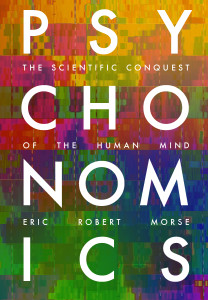
The same goes for all of the psychological illusions of Behavioral Economics—Overconfidence, Anchoring, Representativeness, and so on. Behavioral Economics is a science that points out all the ways in which we make blunders or inconsistent decisions and then deduces that we are unthinking beasts and must be controlled from outside. But in all of these instances, the findings overlook the good reasons behind the actions we make. Even if they are subconscious reasons or otherwise lead to mistakes, they can be and often are based in sound judgment. A model takes the non-paying job for the artistic capital it provides; the star quarterback makes a split-second choice based on years of rational practice. Do these decisions sometimes lead to mistakes? Certainly. Regrets? Without a doubt. But can it be said that they are irrational? By now, even the most ardent behavioral economist must question the premise.
The fact is that the subconscious premises that lead to these decisions are valid, and we’d be foolish to give them up. For instance, the subconscious need for attention and approval that makes negs so successful is, in short, a long-standing need that compels social interaction and civil society. Blocking those instincts would be to eliminate powerful impulses that sustain society—something that even behavioral economists would have to frown upon.
What else would we do away with in order to alleviate these ‘errors’? Consider all that goes on in the six minutes of a speed date. We assume that the most important aspects are covered in the dialogue between the two, the questions asked, the answers, and any other information that slips out. But that would be to neglect the other, more subtle forms of communication that go on under the level of consciousness.
Psychologist Albert Mehrabian conducted a well-known experiment in which he showed how attraction is based far less on the actual content of the communication than might be assumed and much more on the subliminal communication. His data lead to the startling conclusion that tone accounts for 38% of the appeal, physiology accounts for 55% of the appeal, and content accounts for a mere 7% of the appeal. When a person likes the message, it doesn’t really matter what is being said. What matters is how it’s said.
As Mehrabian found, tone and expression can tell so much more about a person than the actual words because tone and expression are almost infinitely powerful. Words are blocky and unaccommodating whereas tone and expression are fluid and compliant. This is especially the case when considering the interplay between all three characteristics. A guy might say he’s interested in climbing the corporate ladder, for instance, and yet, when his expression sneers at the business world, we gather a much richer story.
And this is to overlook all of the biological and chemical interactions that take place even more discreetly. Below the level of interpersonal communication is a whole interplay of chemicals and hormones that offer information to potential mates in the interest of attraction and securing partners. Pheromones, for example, are chemicals that are secreted in one’s sweat, transferred through the air, inhaled by others, and trigger certain chemical reactions in the receiver’s brain. Given the right combination, one’s pheromones alone could compel attraction and arousal from nearby parties—no words necessary.
In turn, intimacy and sexual arousal cause other chemicals like serotonin, vasopressin, and oxytocin to be secreted, thus inducing attraction and bonding. The chemicals are released in a woman when her nipples and cervix are stimulated and in both men and women during sexual climax. Women’s reproductive systems encourage the enterprise. Studies show that women, when ovulating, wear tighter clothes, grow more attracted to masculine men, and become more competitive for the attention of those men. As one of the researchers put it, “The idea is that women turn up everything that has to do with femininity.”
This doesn’t mean that men and women are irrational when it comes to selecting mates. On the contrary, the kinds of signals their bodies are sending them come as the result of eons of development and refinement toward the healthiest and most prosperous procreation possible. Far from illogical, these signals provide the most logical direction for any human being trying to fulfill his or her role as a human being. To reject these signals or somehow turn them off by whatever means science has conjured is what should be considered irrational. As one of the researchers summed it up, “When you are ready to pick a mate, go off the pill.”
While there is no doubt that following intuition can commonly lead to mistakes, the advantages are overwhelming. Considering the extent to which we benefit from subconscious processes, all objective viewers are led to the conclusion that Leonard Mlodinow reached in his book Subliminal: “As we grow to better understand ourselves, we should maintain our appreciation of the fact that, if our mind’s natural view of the world is skewed, it is skewed for a reason.”
And so it will be constructive to browse some of the more popular psychological illusions of Behavioral Economics and see exactly why they arise. And, as we do so, let us use the lessons we learned about editorial models, star quarterbacks, and rogue psychologists to find out what causes these tricks of the mind and whether they’re there for a reason after all.



